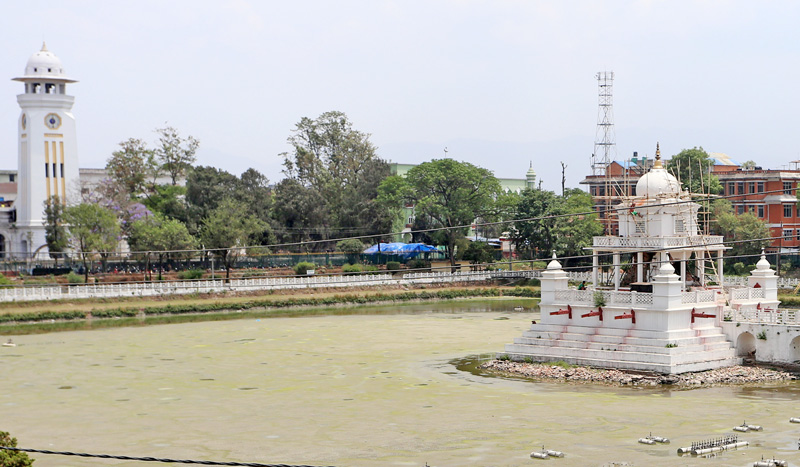DoA to reconstruct Bal Gopaleshwor temple
Kathmandu, October 21
The Department of Archaeology has taken over the responsibility for reconstructing Bal Gopaleshwor Temple, situated in the middle of the historical Ranipokhari, from the office of the Kathmandu Metropolitan City.
A decision to the effect was taken as a tripartite agreement among the National Reconstruction Authority, KMC and DoA today.
However, KMC will continue the facelift and reconstruction works of the remaining parts of Ranipokhari. It includes a lush green cover, a musical fountain, walking trails, pavements, benches, resting platforms, gardens and open spaces for sports activities among others.
The reconstruction of iconic Ranipokhari was halted for the past one month after a difference between the DoA and KMC over the use of roller-compacted concrete by the latter for construction of pillars and foundation of the temple.
The DoA had directed the metropolis to put the reconstruction works on hold after the KMC erected RCC pillars “against the original design prepared by it”.
The UNESCO was also very concerned about “inappropriate rebuilding of historic structures, in particular Ranipokhari, in a letter to the KMC and the DAO. The historic structure of religious importance dating back to 1670 AD is considered among the most famous landmarks in Kathmandu.
According to UNESCO, such practice raises serious questions on the credibility of future heritage rebuilding in the Kathmandu Valley, including major sites such as Kasthamandap and Majudega of the Hanumandhoka Durbar Square Monument zone. Due to the delay in reconstruction works, there is a slim chance of its completion by Bhai Tika (November 1).
The temple opened to the public only on the day of Bhai Tika. Earlier, KMC had announced its decision to pull out of the reconstruction of the temple.
The temple had suffered severe damage in the earthquake last year. KMC had contracted Worldwide Kandel KN KG JV, a private construction company, to reconstruct centuries-old temple and the pond at a cost of Rs 62.9 million.
The temple, commissioned by King Pratap Malla in 1670 to console his queen, who was bereaved of their son, would be rebuilt by the DAO without losing its originality, said an official at NRA.






